
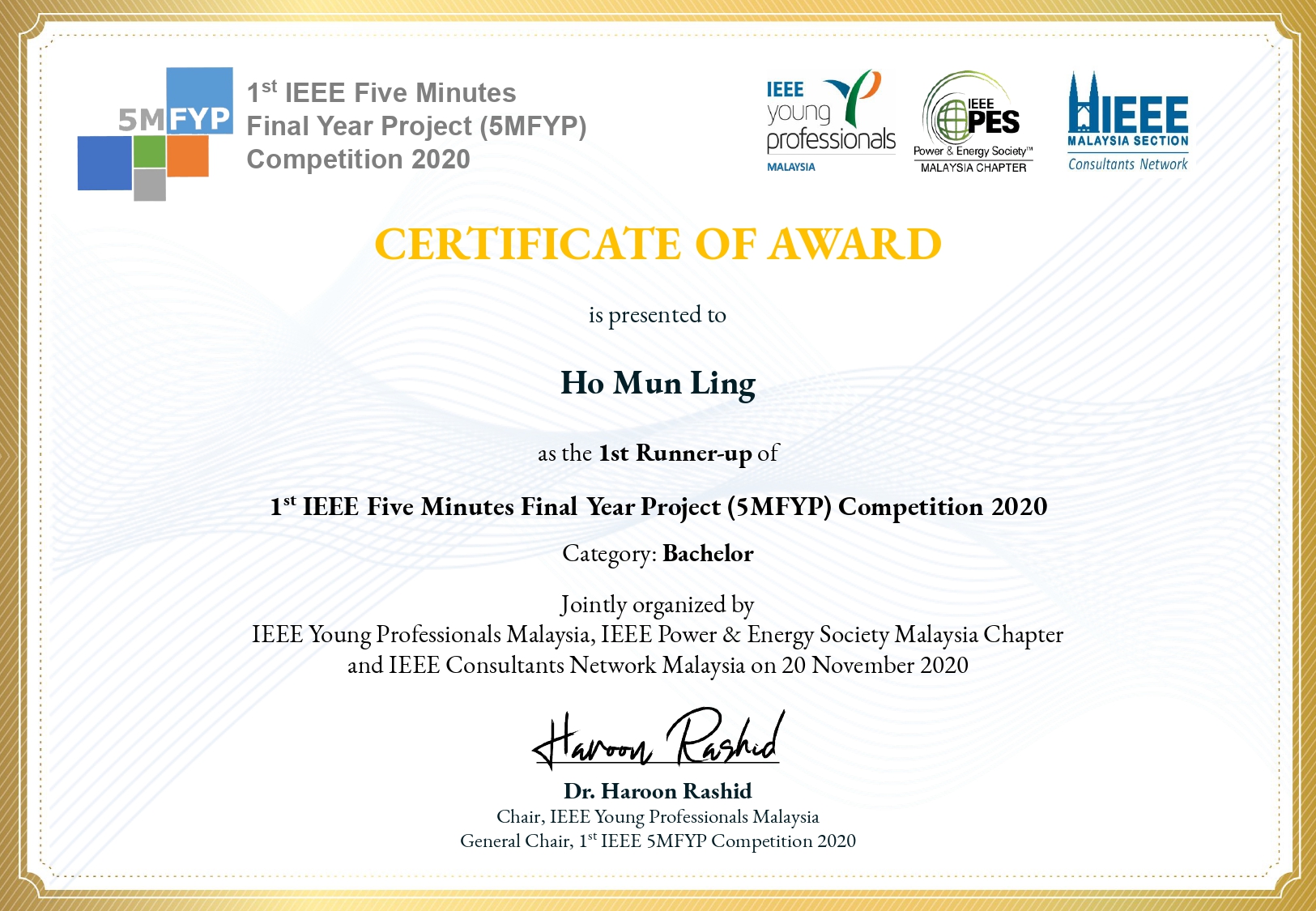
Certificate of award received by Ho
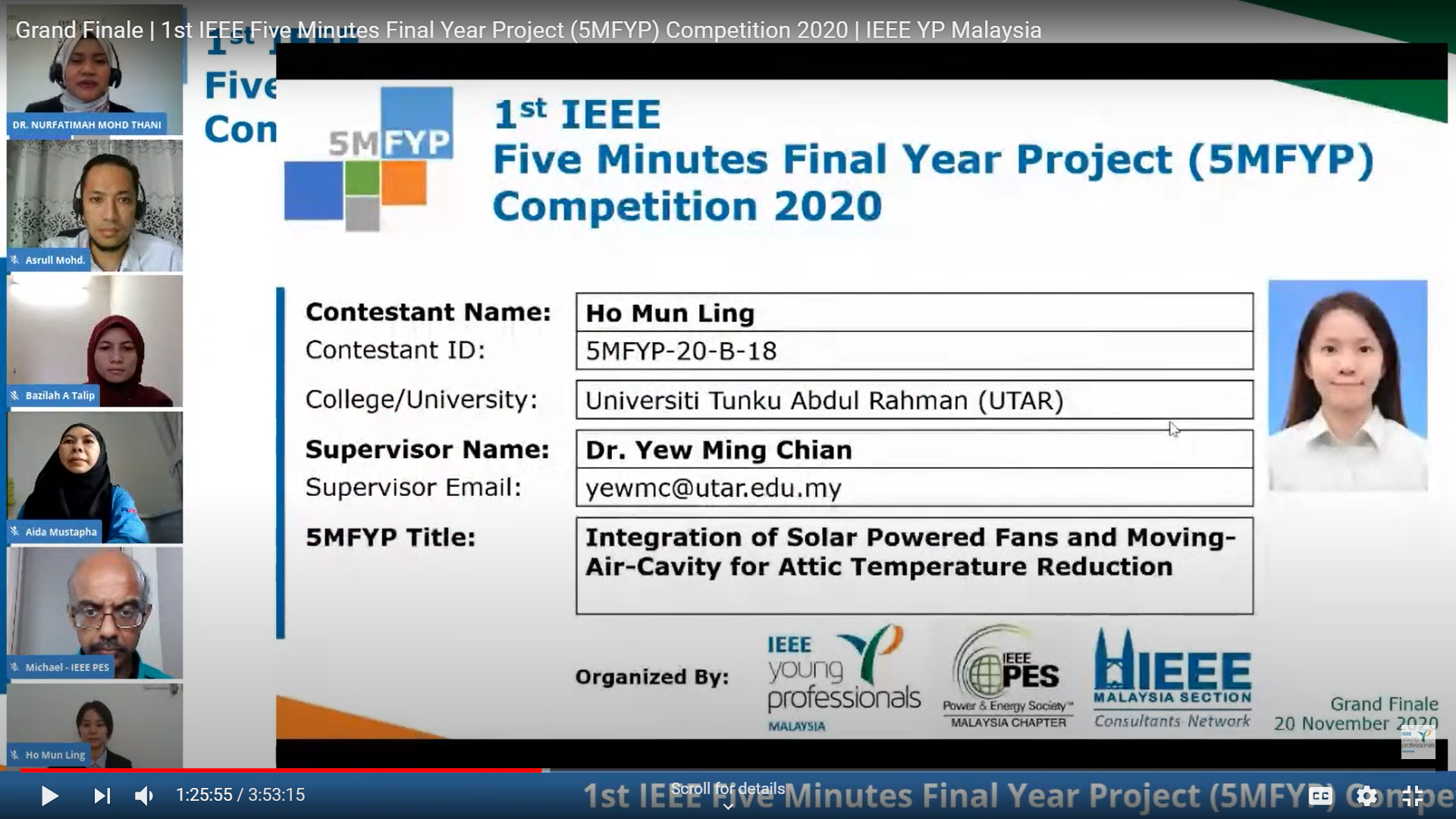
Ho representing UTAR in 1st IEEE 5MFYP Competition 2020
UTAR
Lee Kong Chian Faculty of Engineering
and Science (LKC FES) Bachelor of Engineering (Honours) Mechanical
Engineering student Ho Mun Ling beamed with joy when she won the second
place in 1st IEEE Five Minutes Final Year Project (5MFYP)
Competition 2020.
Ho walked away with RM300 cash prize and award
certificate for Bachelor Category. Her award-winning project was titled
“Integration of Solar Powered Fans and Moving-Air-Cavity for Attic
Temperature Reduction”.
The competition was organised virtually by IEEE Young
Professionals (YP) Malaysia in collaboration with IEEE Power and Energy
Society (PES) Malaysia Chapter and IEEE Consultants Network Malaysia on 20
November 2020 via LIVE at Facebook & YouTube.
The 1st IEEE 5MFYP Competition 2020 was
opened to all undergraduate students (diploma and bachelor levels) in the
fields of Electrical & Electronics Engineering, Computer Science and
Information Technology with the objectives to cultivate students’ academic,
presentation and research communication skills and train, educate and groom
the participants with essential skills of presentation and communication.
The Grand Finale saw the participation of 21 contestants from various
universities in all over Malaysia who presented their Final Year Project
(FYP) within just five minutes using a Single Static Slide.
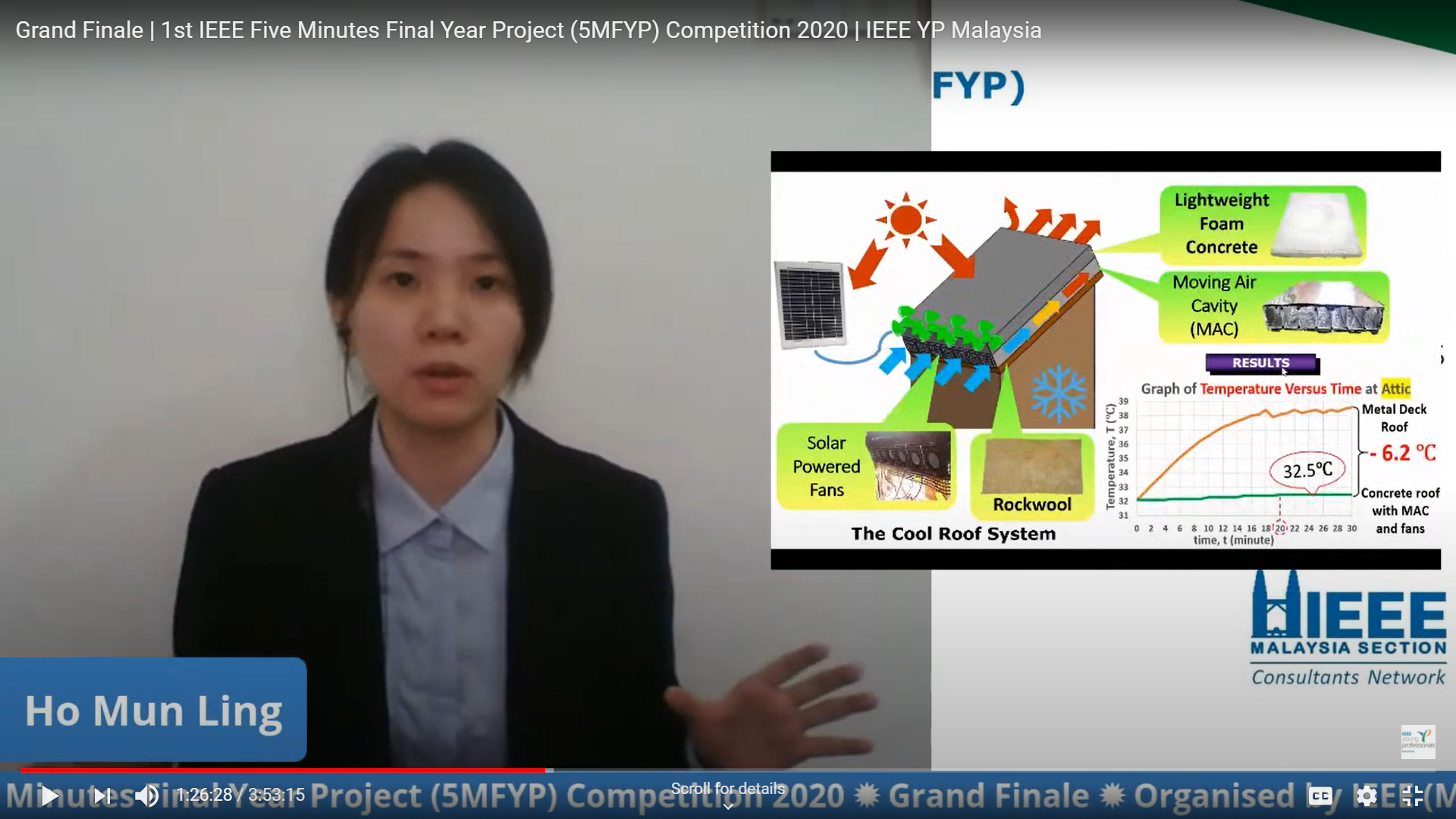
Ho presenting her FYP titled
“Integration of Solar Powered Fans and Moving-Air-Cavity for Attic
Temperature Reduction”
Ho started her presentation by explaining the
inspiration behind her project, “We experience summer throughout the year in
Malaysia. The roof is the main component that receives heat from the sun. In
order to keep the indoor comfortable, air conditioner is unavoidable but
this leads to electricity consumption. This is where sustainable building
design has to come into play.”
“This cool roof system in my project utilises a
natural approach in keeping the indoor comfortable. Normally, homes or
factories use off airtight design which has poor to zero air ventilation.
They trap unnecessary heat and transfer it to our living space. In my
project, I focused on reducing the temperature at the attic by introducing
two new components into our roof which are solar-powered fan and moving air
cavity (MAC),” she said as she presented the idea of her project.
Ho highlighted, “Attic is the space between the
slanted roof and the ceiling. It is always the hottest space in the
building. The basic model of my project is imitating half a roof attic. The
cool roof system is a combination of three layers; firstly, the lightweight
foam concrete is introduced as the roof protective layer underneath it.
Secondly, we have the moving air cavity - a hollow air channel that is made
of an aluminium sheet at its surface and the structure is supported by a
steel rod. Lastly, the most bottom layer is the rockwool for solar powered
fans; the fans will be placed at each inlet of the air channel to move the
air cavity and it will be connected to the solar panel for power.
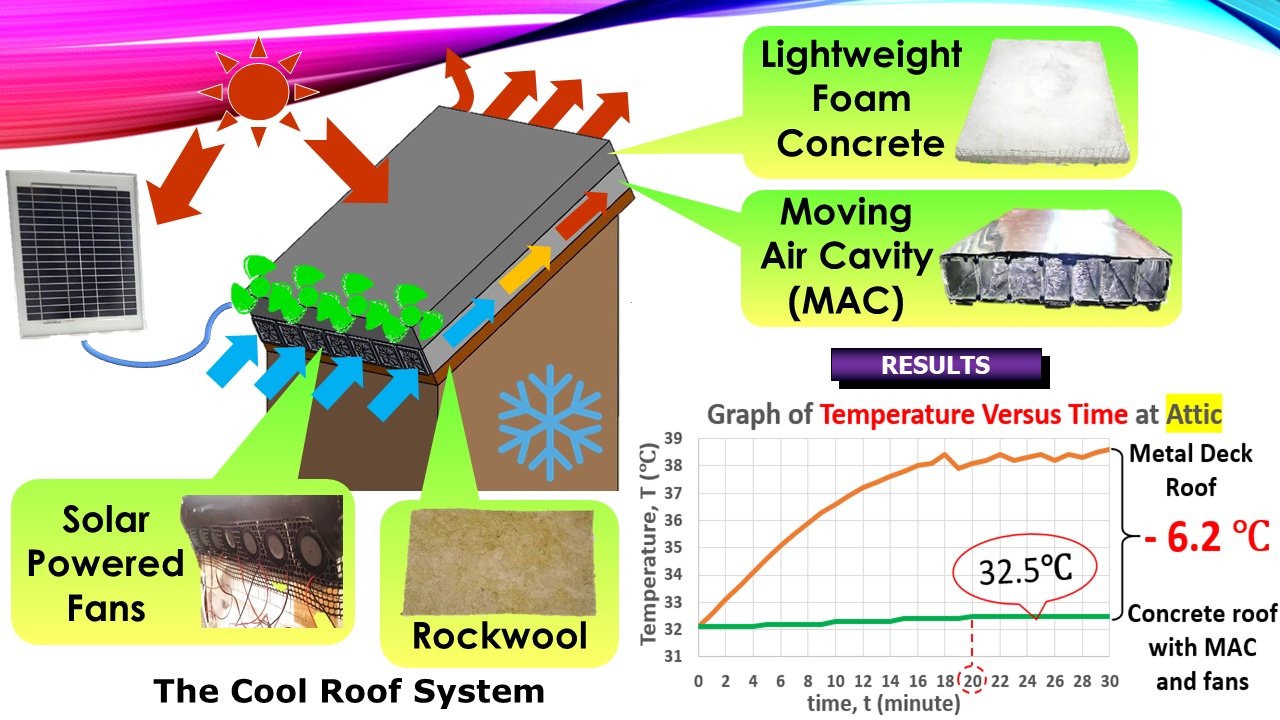
Near to the end of her five-minute presentation, Ho
showed her project result (refer to the photo above), “In this graph, the
orange line presents the metal deck roof which is the normal hottest roof
design while the green line presents the concrete roof with MAC and fans.
After 30 minutes of heat exposure, the metal deck roof hits 38.7 degree
celsius while the cool roof achieved only 32.5 degree Celsius; it was
constant and kept cool even after 20 minutes. This proved a reduction of 6.2
degree Celsius after implementing this cool roof system. Also, the moving
air cavity with high reflectivity inner surface promoted the passive cooling
by providing a space for heat transfer between the cool ambient air, the air
stored in MAC and the heat received through the roof.”
She concluded, “Air circulation is important in keeping the attic cool which then will also keep our house cool; the heat is constantly transferred back to the surrounding despite absorbing the heat from the sun. In conclusion, this eco-friendly cool roof system can reduce the attic temperature by up to 6.2 degree Celsius as compared to normal roof design. House cooling can be done with lesser electricity by this passive and active cooling which is powered by solar energy.”
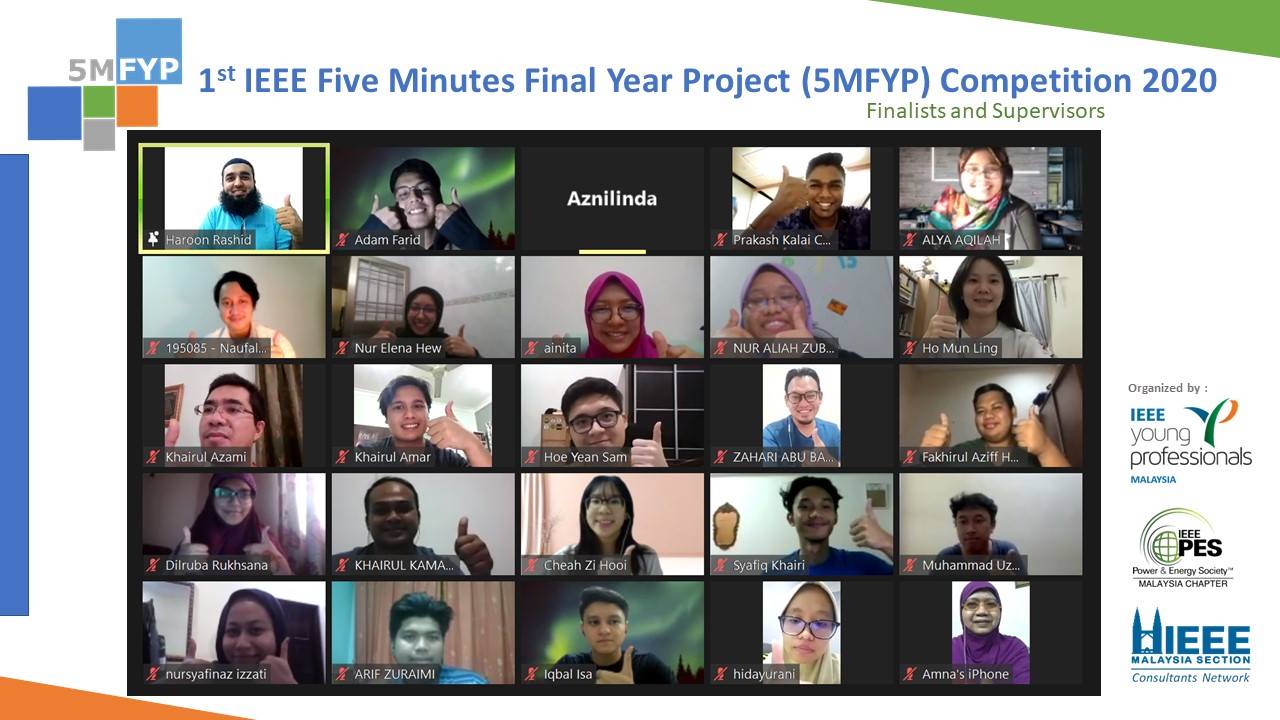
Ho (second row, most right) and other
participants before the Grand Finale
![]()
Wholly owned by UTAR Education Foundation Co. No. 578227-M LEGAL STATEMENT TERM OF USAGE PRIVACY NOTICE